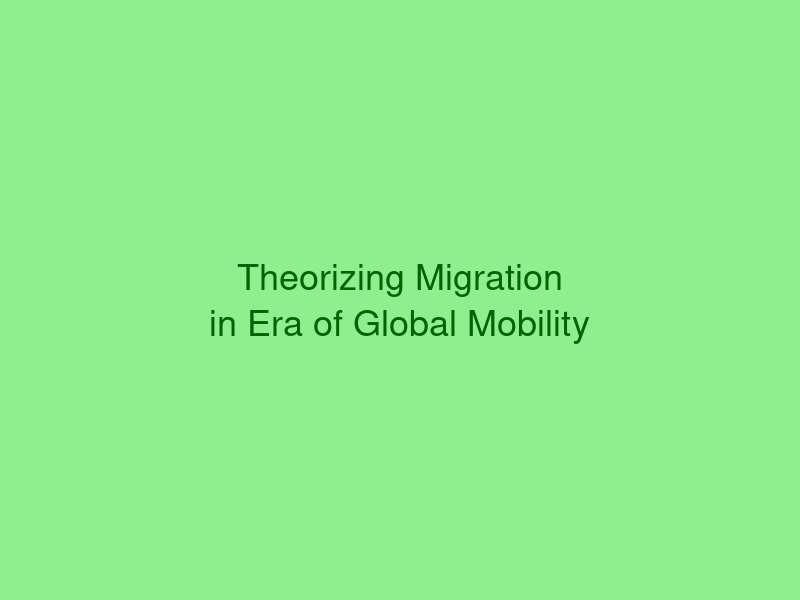Article Information
Authors: Sophie Martin, Ahmed Hassan
Published: April 10, 2025
DOI: 10.xxxx/jghhss.2025.01.003
Journal: Journal of Global Humanities and Social Sciences
Volume: 3, Issue 1
Pages: 78-102
Abstract
This theoretical article examines contemporary migration patterns within the broader context of global mobility, challenging traditional frameworks that treat migration as exceptional rather than integral to human experience. We propose a new theoretical model that accounts for the increasing complexity and fluidity of human movement in the 21st century.
Drawing on mobility studies, transnational theory, and critical migration studies, we argue that current migration theories inadequately address the multidirectional, temporary, and circular patterns that characterize contemporary human movement. Our framework emphasizes the agency of migrants and the dynamic nature of mobility decisions.
The article contributes to ongoing theoretical debates in migration studies and offers new analytical tools for understanding human mobility in an era of increasing global interconnectedness and climate change.
Keywords
Migration Theory Global Mobility Transnationalism Human Movement Mobility StudiesArticle Content

Figure 1: Contemporary global migration flows and patterns
Introduction
Traditional migration theory, developed primarily in the mid-20th century, increasingly struggles to explain contemporary patterns of human movement. The binary distinctions between origin and destination, temporary and permanent, voluntary and forced migration no longer adequately capture the complexity of modern mobility experiences.
Rethinking Migration Theory
We propose a new theoretical framework based on three key principles:
- Mobility as Norm: Rather than treating migration as deviation from sedentary life, we position mobility as a fundamental aspect of human experience.
- Multidirectional Flows: Contemporary migration involves complex, multidirectional movements that resist simple origin-destination models.
- Temporal Fluidity: The temporal dimensions of migration are increasingly fluid, with individuals moving between different mobility statuses over time.
Case Studies in Contemporary Mobility
Our analysis draws on ethnographic research with mobile populations in three regions: circular migrants between Mexico and the United States, climate migrants in the Pacific Islands, and digital nomads in Southeast Asia. These cases illustrate the limitations of traditional migration categories and the need for new theoretical approaches.
Implications for Policy and Research
This theoretical reframing has significant implications for both migration research and policy development. By recognizing the complexity and agency inherent in contemporary mobility, we can develop more nuanced and effective approaches to migration governance.
Conclusion
The era of global mobility demands new theoretical frameworks that can account for the increasing complexity and fluidity of human movement. Our proposed model offers a foundation for future research and policy development in this rapidly evolving field.
About the Authors

Dr. Sophie Martin
Professor of Migration Studies
Sciences Po, Paris

Dr. Ahmed Hassan
Associate Professor of Geography
American University in Cairo